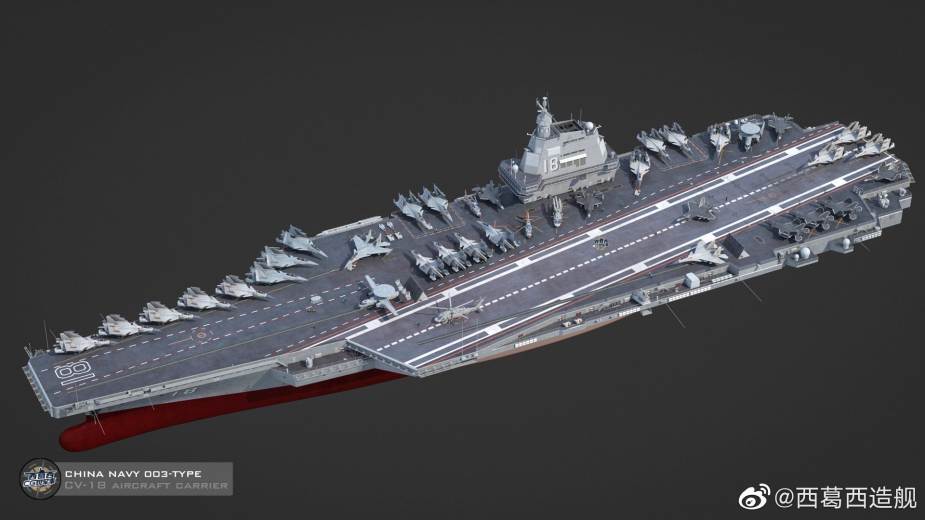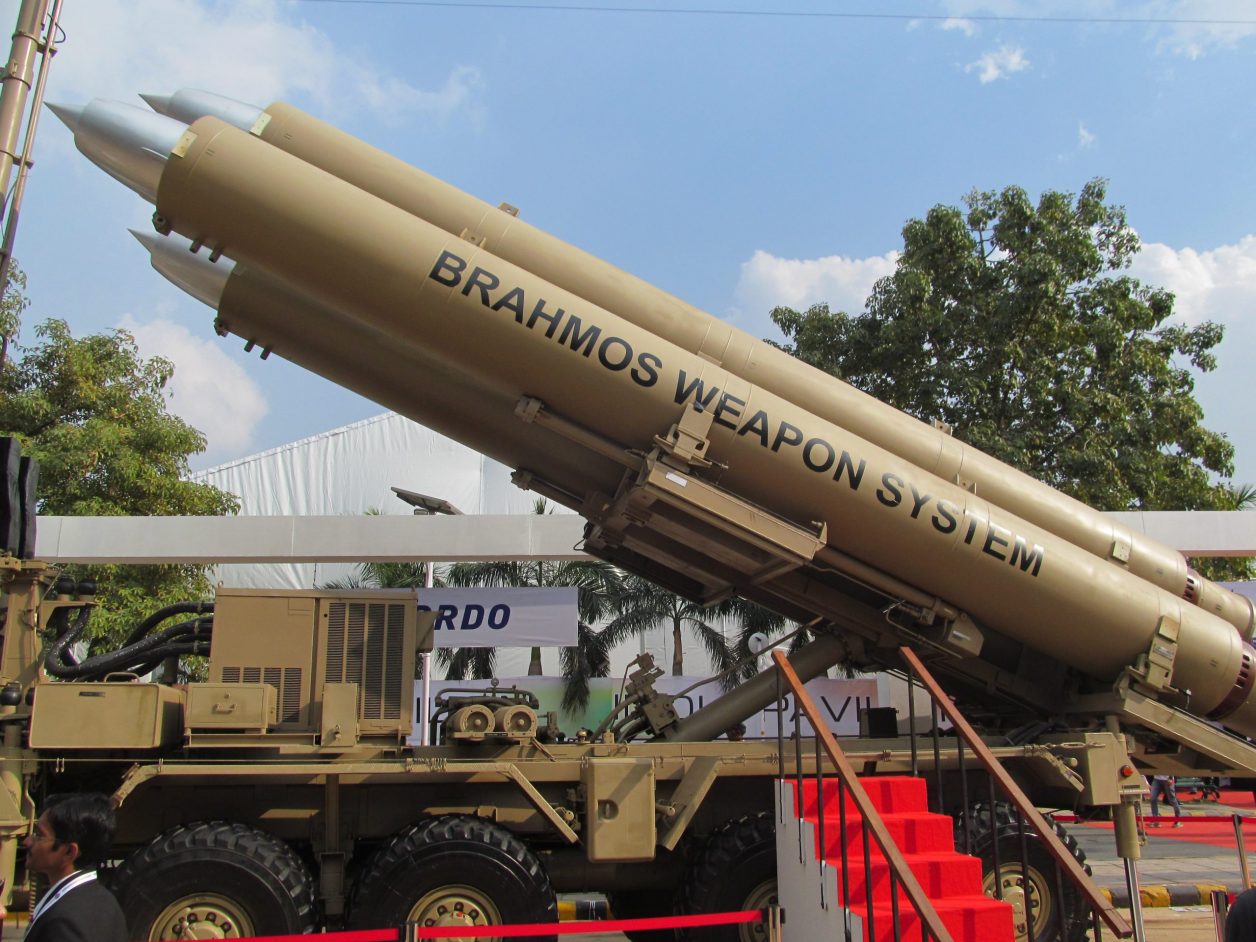The ongoing Russia-Ukraine war has sparked fears of China invading Taiwan, but recent events in the South China Sea (SCS) region suggest the Philippines may be the country in the line of fire of Beijing.
Chinese government vessels have for the first time issued direct threats against a Philippine-held outpost in disputed waters in the South China Sea, according to a report by the Inquirer, a Philippines-based media outlet.
A Chinese Coast Guard (CCG) vessel warned Philippine troops stationed on a rusting warship, BRP Sierra Madre, at Ayungin (Second Thomas) Shoal in the West Philippine Sea to “seriously consider the stand of the Chinese government” or else there will be “consequences” if they insist on “making trouble.”
The BRP Sierra Madre is a World War 2 vintage landing ship that first served the US Navy as USS Harnett County and then Vietnam as RVNS My Tho before it entered service with the Philippine Navy in 1976.
In 1999, the ship was run aground on the Ayungin shoal by the Philippine Navy to serve as an outpost.
The shoal is about 105 nautical miles (around 194 kilometers) off Palawan in the ‘West Philippine Sea,’ which is Manila’s term for the eastern portion of the South China Sea (SCS) that lies within the Philippines’ exclusive economic zone (EEZ) but overlaps with China’s nine-dash line claims in the SCS.
As per the 1982 UN Convention on the Law of the Sea, coastal states are allotted 200 nautical miles (370 kilometers) EEZ from their shores.
In 2016 the Permanent Court of Arbitration (PCA) in The Hague dismissed China’s nine-dash line claims in the South China Sea while explicitly stating that Ayungin Shoal (also known as Second Thomas Shoal) is within the Philippines’ EEZ.

However, Beijing continues to assert claims over the Ayungin Shoal, which it refers to as ‘Ren’ai Jiao,’ despite the shoal being 694 nautical miles (1,285 kilometers) from Hainan, China’s southernmost province.
The Philippine Navy conducts rotation and resupply (RORE) missions to its eight outposts in the West Philippine Sea using its vessels, except in the case of Ayungin, where a pair of 24-meter wooden boats are used to avoid raising tensions with China.
Supplies are brought in once a month, while the rotation of troops happens every two to three months or possibly longer during typhoon season.
China Warns Of ‘Consequences’
During a June 21 RORE mission, two China Coast Guard (CCG) ships, No. 4302 and No. 5304, shadowed the wooden boats underway for BRP Sierra Madre.
One of the two CCG vessels that followed the supply boats to the shoal’s entrance positioned itself a nautical mile away (around 1.85 kilometers) as the supplies were being unloaded and transferred to BRP Sierra Madre (LS-57) through ropes and pulleys.
“To worship No. 57, we hope that you should seriously consider the solemn stand of the Chinese government. If you insist on making trouble [in] your way, you will take responsibility for all these consequences arising,” the CCG ship with bow No. 5304 said over the radio.
The incident appeared to be the first time the CCG made a veiled threat in a radio warning to the Sierra Madre, reported the Inquirer, who joined the RORE mission to the area on June 21.
One of the Philippine soldiers aboard the BRP Sierra Madre dismissed the threat saying, “They’re just bullying [us].”
According to the Inquirer, Chinese vessels that operate regularly in the area usually do not obstruct the resupply of rations. Still, they protest the delivery of construction materials that could be used to repair BRP Sierra Madre, which has been rusting for years.
Just before they reached the shoal’s entrance, the two supply boats had been told by another CCG ship with bow No. 4302 over the radio that they were being allowed to “proceed on your mission to bring food supplies” on the condition that “there are no construction materials.”
In November 2021, China turned high-pressure water cannons on supply boats after suspecting them of carrying construction materials, prompting them to abort the mission.

Beijing’s Aggression Prompts Manila To Join Hands With India, US, and Australia
The Philippines is concerned about Beijing’s aggressive actions in pursuit of its sovereignty claims over islands across the South China Sea (SCS) which has prompted Manila to increase military spending plus cooperate more closely with countries like India, the US, and Australia that share the same concerns.
Just two months following the November 2021 incident, the Philippine defense chief signed a $375 million contract with India’s BrahMos Aerospace Private Limited (BAPL) to purchase the military’s first shore-based anti-ship missile system that he said would be used to defend the country’s sovereignty, especially in the disputed South China Sea.

“As the world’s fastest supersonic cruise missiles, the BrahMos missiles will provide deterrence against any attempt to undermine our sovereignty and sovereign rights, especially in the West Philippines Sea,” Lorenzana said. The missile firepower “will provide counterattack capabilities within the Philippines’ exclusive economic zone,” he added.
Moreover, Manila also allows the US and Australia to use Philippine Territory as launch pads for surveillance missions in the South China Sea.
?? The RAAF redeployed P-8A Posidon A47-008 from Clark Air Base in The Philippines, where they had recently ingested #PLAAF chaff over the South China Sea, to INS Hansa, Goa ?? for exercises with the Indian Navy on 2022-06-06.https://t.co/UUO97mKCLv#7CF9D2 #INSHansa #ClarkAB https://t.co/cNv3Hc1jlf pic.twitter.com/uLxTclxjw1
— Steffan Watkins (@steffanwatkins) June 8, 2022
The US and Australia have a military presence in the Philippines, despite the Philippine Constitution forbidding foreign bases.
In March, thousands of soldiers from the Philippines and the US participated in the archipelago nation’s largest-ever joint military drills, including live-fire maneuvers, aerial assaults, urban combat, and beach landings.
- Contact the author at tanmaykadam700@gmail.com
- Follow EurAsian Times on Google News




